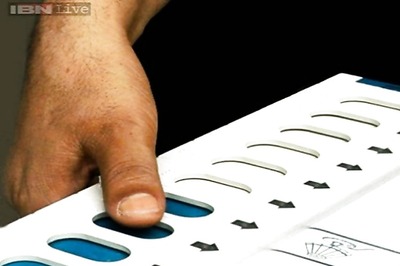
views
Tokyo: Lonely astronauts on the International Space Station may soon be getting an android friend from Japan.
And for the folks back home, it will tweet.
Japan's space agency is considering putting a talking humanoid robot on the International Space Station to watch the mission while astronauts are asleep, monitor their health and stress levels and communicate to Earth through the microblogging site Twitter.
Japan's space agency JAXA announced this week that it is looking at a plan to send a humanoid robot to the space station in 2013 that could communicate with the ground through Twitter - primarily feeding photos, rather than original ideas - and provide astronauts with "comfort and companionship."
Following up on NASA's "Robonaut" R-2 program, which is set for launch on the Discovery shuttle next week, the Japanese android would be part of a larger effort to create and refine robots that can be used by the elderly, JAXA said in a statement.
Japan is one of the leading countries in robotics, and has a rapidly aging society with one of the world's longest life-expectancies.
Improving robot communication capabilities could help the elderly on Earth by providing a nonintrusive means of monitoring the robot owner's health and vital signs and sending information to emergency responders if there is an abnormality, JAXA said.
"We are thinking in terms of a very human-like robot that would have facial expressions and be able to converse with the astronauts," said JAXA's Satoshi Sano.
The robot was being developed with the advertising and communications giant Dentsu Inc. and a team at Tokyo University.
The NASA project has human-like head, hands and arms and uses the same tools as station crew members. The "Robonaut" called R-2 - a shout-out to R2-D2 of "Star Wars" fame - is intended to carry out maintenance tasks in the station's Destiny lab.
NASA says it hopes that humanoid robots could one day stand in for astronauts during spacewalks or perform tasks too difficult or dangerous for humans. For now, the US$2.5 million NASA robot exists only from the waist up and is limited to activities within the lab.
The robot also uses Twitter, but generally just messages relayed from NASA spokespeople. Sano said the agency is considering ways to program the Japanese version to be more original.
More importantly, he said, the Japanese project is intended to build on the R-2 idea by providing a more communicative companion for the astronauts themselves.
Japan has no manned space program of its own, but its astronauts have been part of the space station crew and Japan also maintains a laboratory, called "Kibo," or Hope, on the station.
Sano said that JAXA hopes the robot's communications with Earth while there are no Japanese passengers on the space station will help maintain public interest and support in the mission.
He said the first Japanese astronaut to tweet from space was Soichi Noguchi, who returned to Earth in June last year after several months aboard the ISS.




















Comments
0 comment